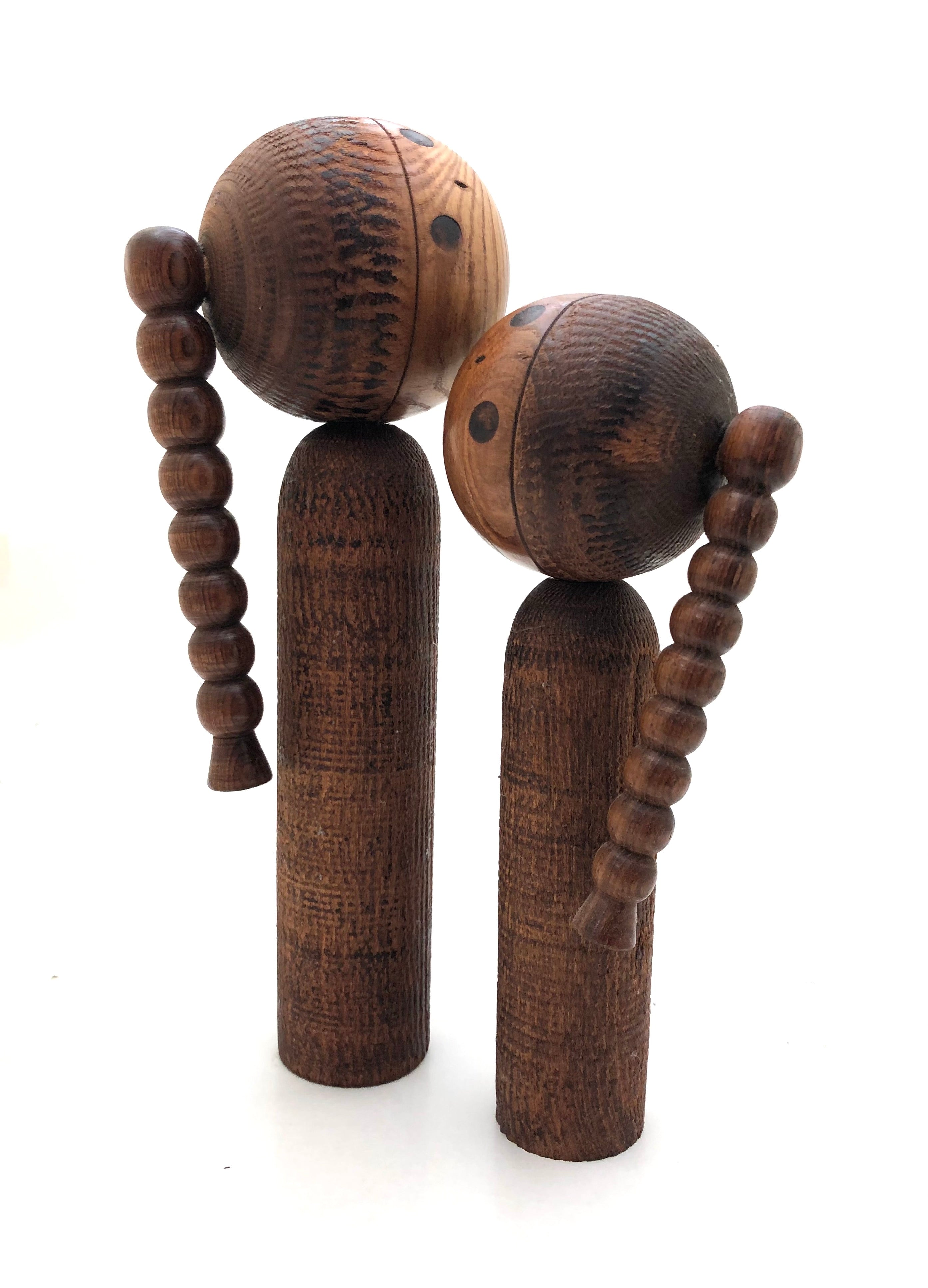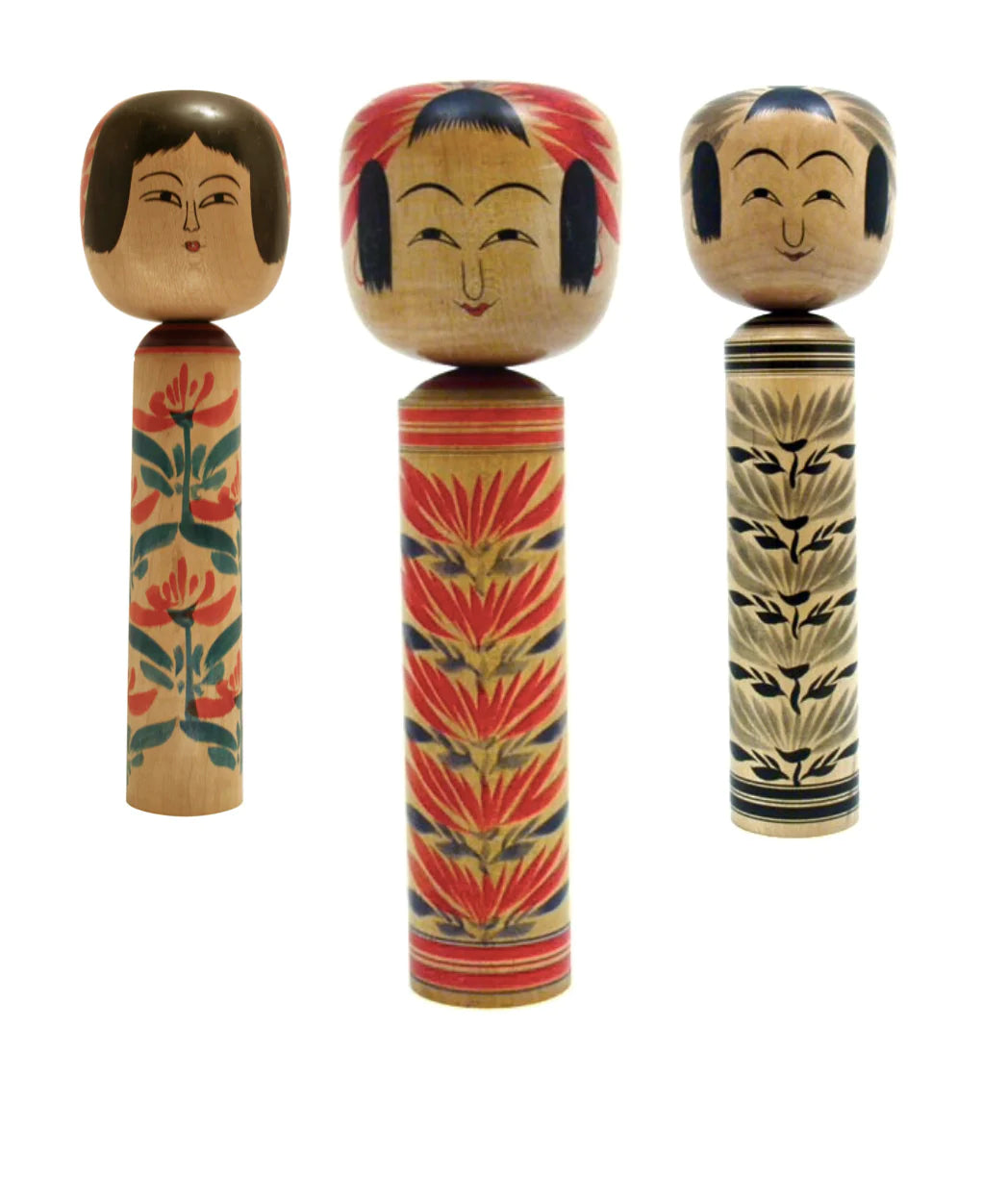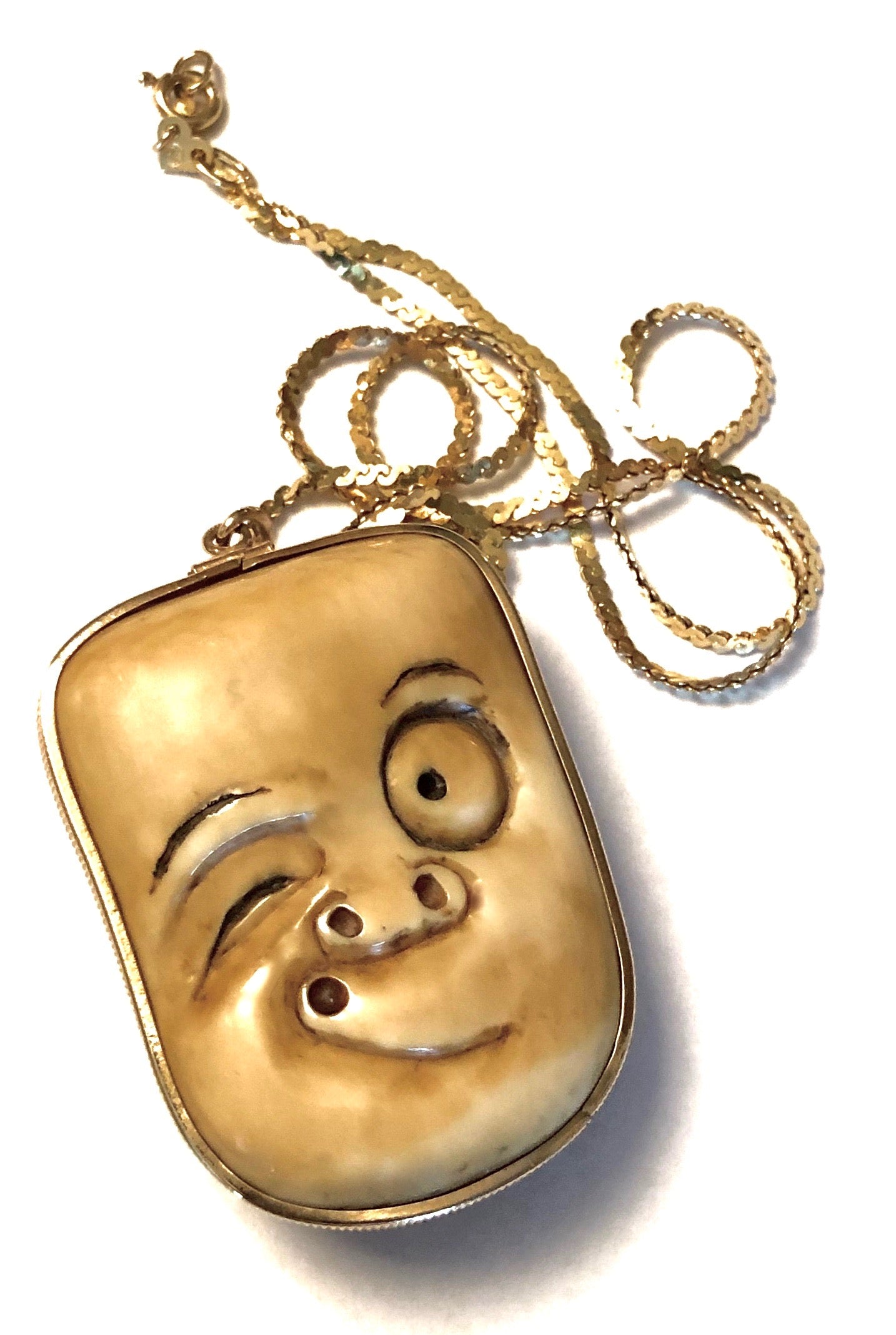
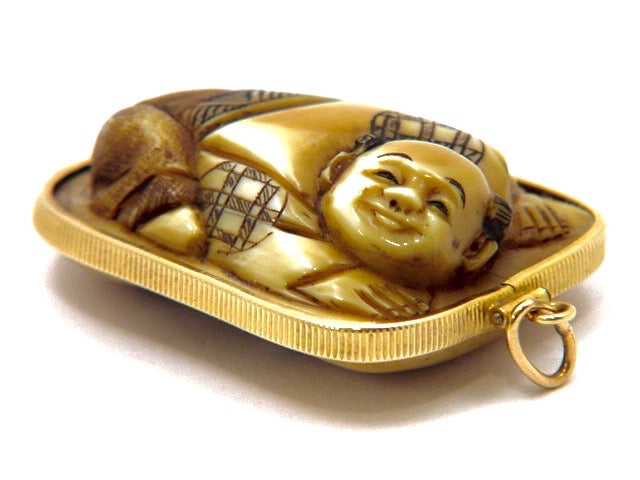
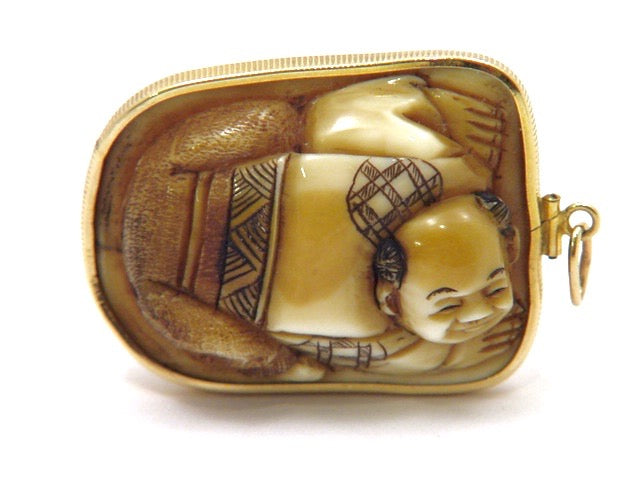
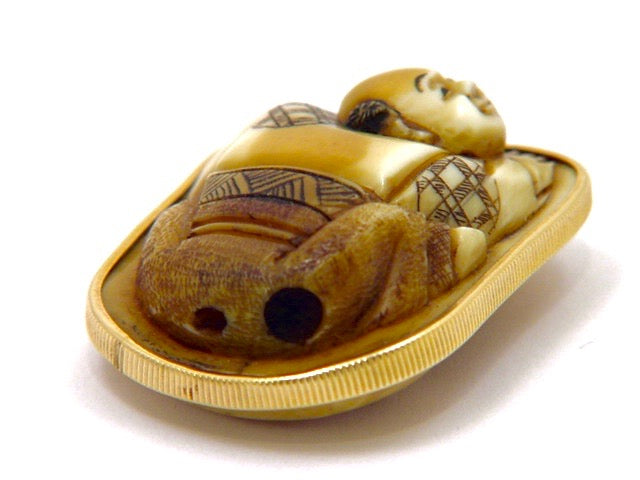
Antique Ivory Netsuke of Usofuki | Antique Japanese Ivory Pendant
All our items ship free in the US
Dimensions: 1-7/8”l x 13/8” w x 3/4”d.
The character on this pendant with gold chain represents a boy called Hyoutokusu, he is exceptionally rendered from “old” ivory and has a beautiful, natural soft patina. The carving of Hyoutokusu is of course on the opposite side of the figure of Usofuki. The different size himo-toshi, (cord attachment for the netsuke), is shown in the images which indicates it is an old piece. It has a tiny gold screw attachment that keeps the seating around the netsuke, not damaging the netsuke itself. While the grooved gold setting was applied mid-20th/c, the ivory carving itself is intact and unchanged by the setting, and dates from much earlier, (1900s). Usofuki is a legendary and revered character in Japan. Usofuki, also known as Hyottoko, was a boy named Hyoutokusu from which the character’s name originated. Hyottoko made strange clown faces and was said to create gold out of his belly button (hence, this piece was seated and chained with 18ct. gold). This is a dramatic piece and was originally made for a Japanese woman of wealth. This piece is unsigned.
Antique Condition: Excellent condition, with natural patina. The piece retains the original craft/workmanship. Any discoloration, chipping/cracking, surface wear, or structural damage was noted. The only provenance we have on the piece, other than what is published herein, is that we purchased this in 1986 at the Est-Ouest Auction House which has the longest history of selling Japanese artifacts in that country.
NOTE: The Japanese, primarily before 1947, had a history of utilizing rare and historic animal bones and rare woods for many objects used by the samurai and upper classes at that time. Many of these art objects fell under the Okimono's decorative category, including Netsuke, Brooches, Hair Ornaments, functional objects as musical instruments, and furniture seen throughout this earlier part of history. A new dialogue during the Meiji period between Japan, (not China) and the West led to a concern for protecting many rare materials incorporated into art and craft practices. This changed to address customer interests and the changing ESA laws throughout the world influenced all production of art goods from this date forward. Any object being sold that falls into the endangered species category must be at least 100 years or older and substantiated by the signature and date on the piece for radiocarbon dating.
ACKNOWLEDGEMENT: A Special Thanks to preservation efforts, animals and endangered materials (e.g. ivory and rare woods) are conservatively used today, if not banned altogether. However, we recognize that these materials have been important since ancient times for making a wide range of functional and decorative items. We only feature antique ivory and rare tree species because, while we support conservation, we truly feel that the experience and appreciation of historic artifacts should also be preserved.
Return Policy
Our antique/vintage pieces are identified/described and professionally photographed, and considered, “as is”, therefore all sales are final. Read our full refund and return policy.


